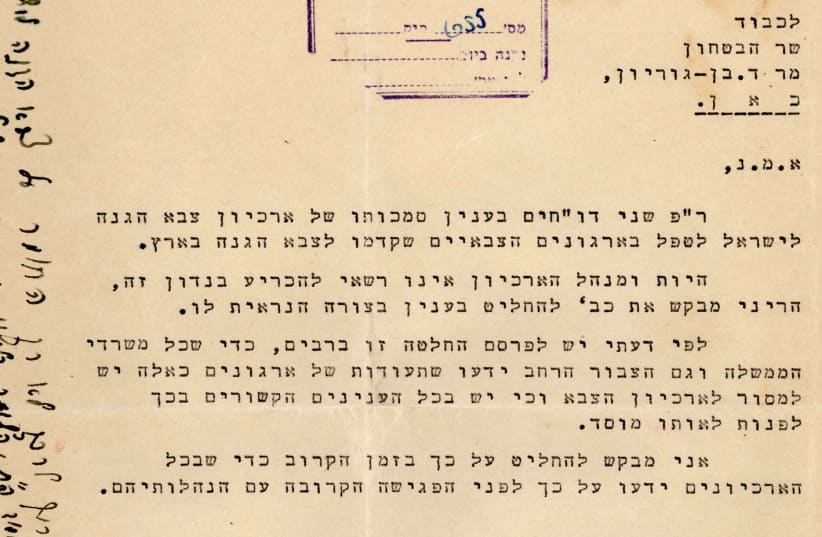Israelis are now allowed to copy documents from the IDF and Defense Establishment Archive, the Ombudsman's Office ruled last week after more than three years of discussions, the Akevot Institute for Israeli-Palestinian Conflict Research said.
According to Akevot, manual copying of declassified documents in the archives will not be restricted. Until the decision, one was only allowed to read documents on the computers in the archive's reading room, while the archive did offer copies of the documents for a significant fee.
Akevot historian Adam Raz issued a complaint with the Ombudsman's Office on the issue in 2017, with the office ruling in August 2019 that the complaint was justified and that the IDF Archive had no authority to charge the fee. The office later ordered the archive to lower the fee, canceling it altogether for academic researchers.
On May 5, the Ombudsman's Office ordered the IDF and Defense Establishment Archive allow free manual copying in the archive's reading room. The archive is yet to have announced whether it would stop charging a fee for releasing copies of the material.
The majority of the state and IDF archives' files remain classified. A report published by Akevot Institute in 2019 suggested the Director of Security in the Defense Establishment (DSDE), a division within the Defense Ministry, has ordered to deny access to controversial declassified documents with no legal authority.
According to Akevot, the documents classified by the DSDE mostly relate to Israel's nuclear program, the 1948 war and Israel's foreign affairs. As of 2017, only 1% of documents stored in state archives was available to the public eye.
The DSDE's orders were reportedly revealed after a comment was discovered in the Hashomer Hatzair's online archive, saying "Booklet stored in vault... Not to be provided to researchers (Order of State Archive, June 2004)."
According to Akevot, the booklet in question is a document dating back to June 1948, listing the villages depopulated by the Yishuv's paramilitaries between December 1, 1947 and June 1, 1948. The document was later released by Hashomer's Yad Yaari Archive.
"The departure of the English, which was merely the other side of the coin, did, of course, help evacuation, but it appears that more than affecting migration directly, the British evacuation freed our hands to take action," the document says.
"Note that it was not always the intensity of the attack that was decisive, as other factors became particularly prominent – mostly psychological factors," the document continues.
"The Deir Yassin action had a particular impact on the Arab psyche. Much of the immediate fleeing seen when we launched our attacks, especially in the center and south, was panic flight resulting from that factor, which can be defined as a decisive catalyst."
The document then lists the capture of Sheikh Muwannis, on the ruins of which Tel Aviv University was founded. "The Arab learned that it was not enough to make a deal with the Haganah, and there were 'other Jews,' of whom one must be wary, perhaps even more wary than of members of the Haganah, which had no control over them," it says.
"To summarize the previous sections, one could, therefore, say that the impact of Jewish military action (Haganah and Dissidents) on the migration was decisive, as some 70% of the residents left their communities and migrated as a result of these actions."
